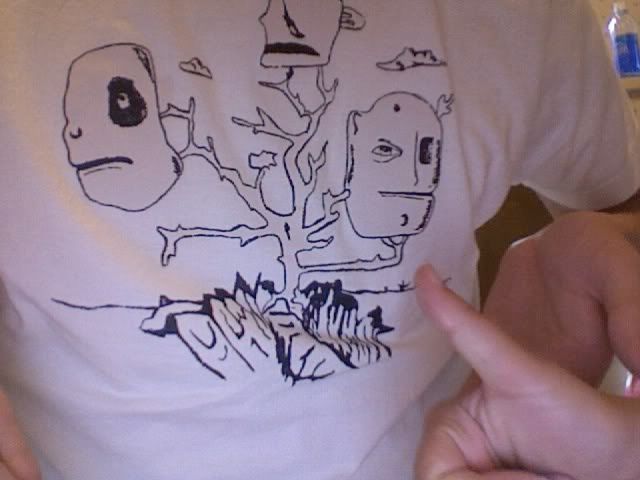Had my biggest losing day today in a while. In general I feel like I've been playing pretty well, but nothing went right today at all. I'm gonna look over my hands some more tomorrow, but I think aside from a couple specific hands, my play was pretty standard.
I was gonna post about pot-sized river bets and talk about it in depth, but I don't really feel up to it right now, so I'll just cover it briefly.
In MOP, they talk about alpha (don't have greek letters on here) which is the optimal betting frequency for the bettor, and the folding frequency for the defender. In NL games, alpha = s/(1+s) where 1 is the pot-size, and s is the fraction of the pot bet. So, if someone makes a pot-sized bet on the river, alpha is 1/2. This means that for any pot-sized bet one makes on the river, they should be bluffing half of the time. Conversely, the defender should fold 1/2 of their hands, and call (or raise, but for the sake of simplicity, assume just call) the other half.
A leak I've noticed in my game-- and pretty much everyone's game at the lower limits-- is that a PSB on the river is rarely a bluff. I still think, though, that I've been folding too much of these. I am definitely not bluffing enough of the time on the river, so I have started to try to attempt more big bluffs on the river in spots where doing so isn't unreasonable. (This is part of the reason why today went so poorly-- I got called by second pair in one hand that sticks out specifically in which I thought there was no way I was getting called).
Say the following occurs:
.5/1 game and I raise UTG to 3. The SB calls and BB folds so there is 7 in the pot. The flop comes KdQh2d, he check-calls a bet of 6.50, making the pot 20. The turn is the 5c and he again check-calls 15, making the pot $50. The river is the 7h and he bets the pot into me. What should I call with?
Say (hypothetically, of course) my range is AK,AQ,KQ,QQ+,22,55,JTs,KJs, KTs and a couple bluffs-- we'll say 89s and 79s.
This is: 12 AK's, 12 AQ's, 9KQs, 6 AA's, 3 KK's, 3 QQ's, 3 22's, 3 55's, 4 JTs's, 3 KJ's, 3 KT's, 4 89s, and 4 79s.
Now assume my opponent knows my range and is trying to bluff ~optimally (it gets more confusing, and I'll do my best to explain later).
My range consists of 69 separate hands. Therefore, I should be calling with about 35 hands.
So, we work downwards.
KK = 3
QQ = 6
55 = 9
22 = 12
KQ = 21
AA = 27
KJs = 30
KTs = 33
And some AQ hands = 35
The first part of this range is incredibly obvious-- we're never folding a set in this spot, nor top two. But as you go farther down the list, you see a lot of hands that most people wouldn't ever call with-- such as AQ or KT. Top pair with a marginal kicker or second pair top kicker-- against a typical opponent-- is only going to beat a bluff in this spot. Are people really bluffing their missed draws this often?
Well, maybe. Maybe not. But they should be. And so we should usually call much more liberally.
If you go further into the problem, consider what happens when he bets only $25 on the river. Now our alpha is 0.5 / (1 + 0.5) = 1/3. So our folding frequency is 1/3, which means (1 - alpha) our calling frequency is 2/3. This is 46 hands that we should call a half-PSB on the river with. That means we should call optimally with all of our AQs and even one of the JTs in our range. Of course, this is still going under the assumption that our opponent knows what our range is-- and in this spot, it's incredibly strong.
The problem with this is talked about in Chapter 14 of MOP, but it's too late/complicated for me to go into right now (and I'm not sure if I'm fully grasping it, anyway).
skip to main |
skip to sidebar

Poker, Gaming, and Life
About Me

- NFulton
- Want to read the brilliance of Beast Duels in 140 characters or less? Follow us on Twitter at http://twitter.com/beastduels
2 comments:
Neat. Good read. Can't wait to get to Mathematics of Poker after I finish off Ace on the River.
Agreed, nice post. Definitely a topic worth exploring more - I've been looking at this topic also but your analysis is much more comprehensive! :)
Post a Comment